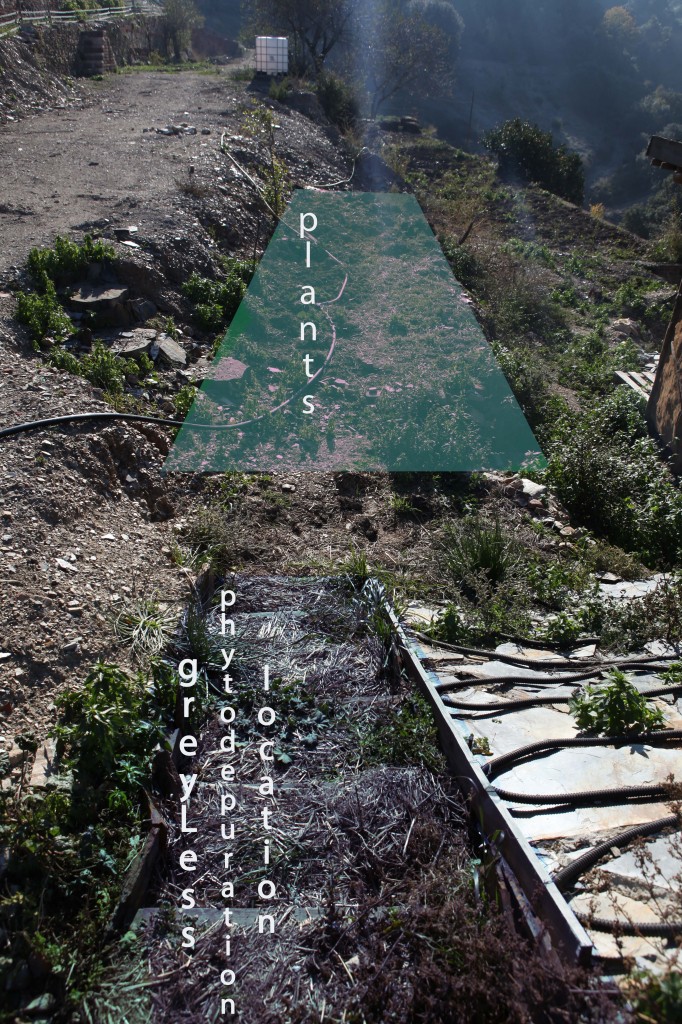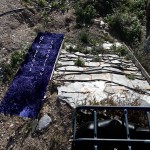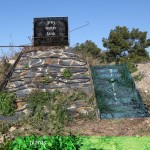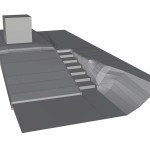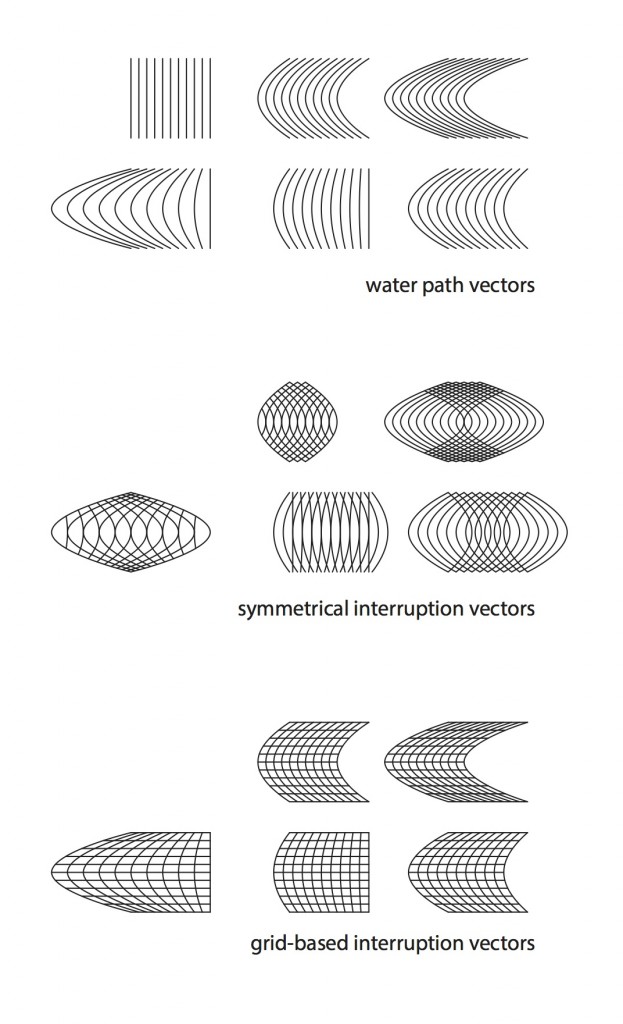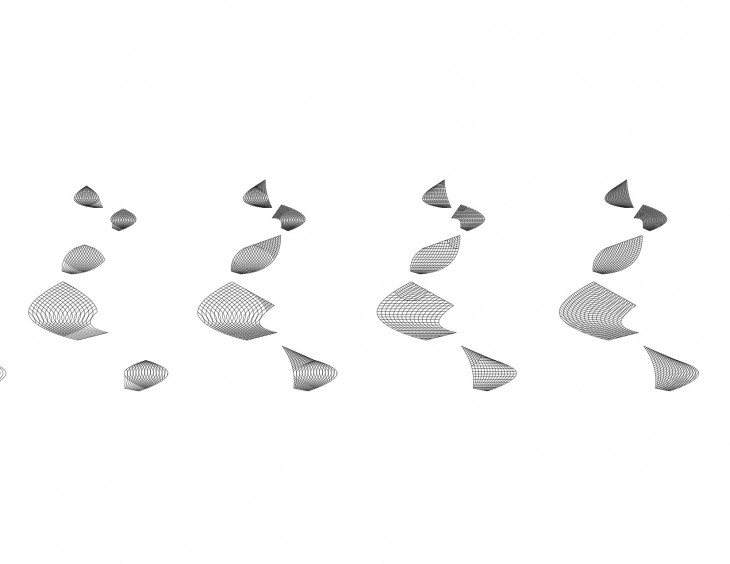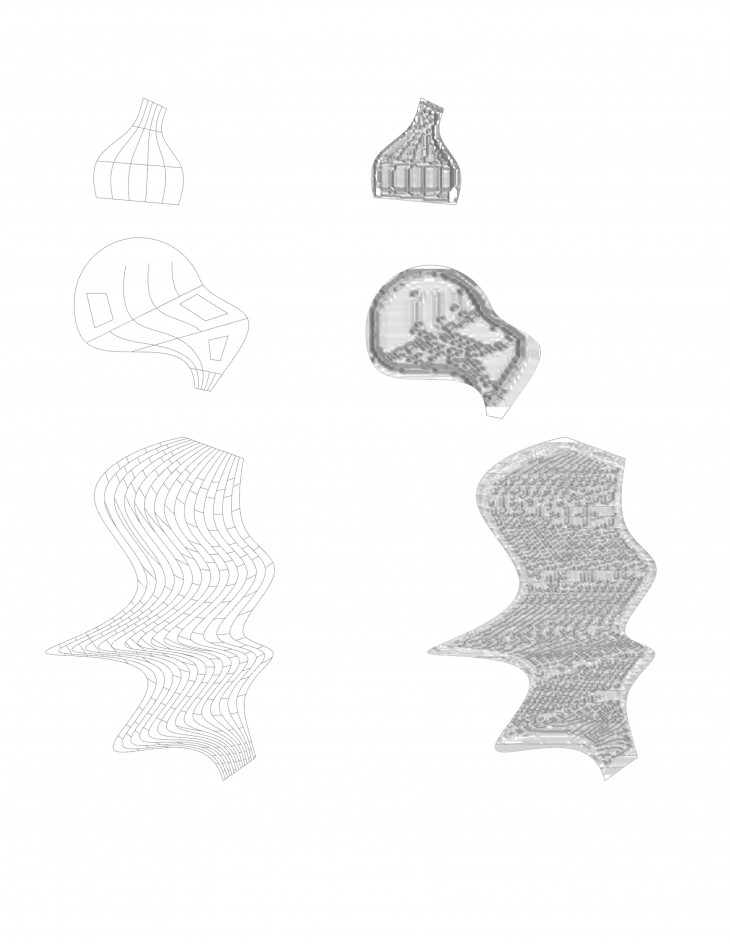GreyLess designers hiked to Valldaura for a pre-installation site visit to determine an ideal location to place the phytodepuration system. The ideal location would be adjacent to: crops that need to be irrigated, water tank, and visible from the house. After the site visit we acquired more information about the tanks that can be accessed. Currently, two rain water basins about 2 meters from the back end of house provide the house with clean water. Farther into the forest resides a black and gray water tank that are combined and unaccessable. In the future, the residents of Valldaura plan to separate black and grey water tanks. For this installation we will use the existing water tank to simulate grey water that will flow through our system.
Final Form:
The 4th prototype was a single, linear form incorporating the slow sand filter, algae slide within the high and low pools to create one coherent system. Arriving to our final form, we depart from the single slope design we have used in our past prototypes to developing it in section, giving us a more refined geometry to optimize the water vectors as they flow through the system. In the past each prototype was developed based on discrete paramaters and developments and changes in those parameters. In this prototype we will fully integrate all of the lessons learned from previous prototypes as well as the full scope of parameters into eachother.
[Image below depicts the mapping of parameters for the final prototype, prior to integration and site strategy.]
Parameters:
Post Midterm Review, we stepped back from the prototype to analyze which parameters were successful, need to be improved, and new parameters to be implemented.
What was successfull?
-Increase surface area for hosting biofilm: after extracting contour lines from the digital model surface, the contours of each tooth are distorted from each other by increasing the apex point offset from the centerline of the tooth.
What needs to be improved?
-Using diameter of the teeth to replicate effective aggregate size instead of depending on the Venturi effect to drive the perimeter of the flumes.
-Improve entrance/exit curve oscillation in perimeter of the flumes in order to get the water to reach the outer extents of the slide. This will be done by developing each flume in section.
-Ensure that the profiles of the final contouring of the form doesn’t negatively effect the water pathways.
-Centerline of the water flow in each row needs to be offset from those of the row before and after instead of being aligned. In the upcoming prototype enhanced by using curved interruption vector lines rather than straight lines, this is something we did in the 2nd prototype, and want to re-incorporate in our new form.
New Parameters:
modular structure strategy
water flow vectors superimposed with interruption (curved) vectors as was done in our 2nd prototype.
-Arduino Outputs
Output Ranges:
Converting outputs in ardruino code to get the numerical data in a form we can translate to a projection. In order to do this, we will send the arduino translations to grasshopper via firefly where we will use the data to manipulate the geometry of the water flow vectors for the projection data visualization before being visualized in processing.

